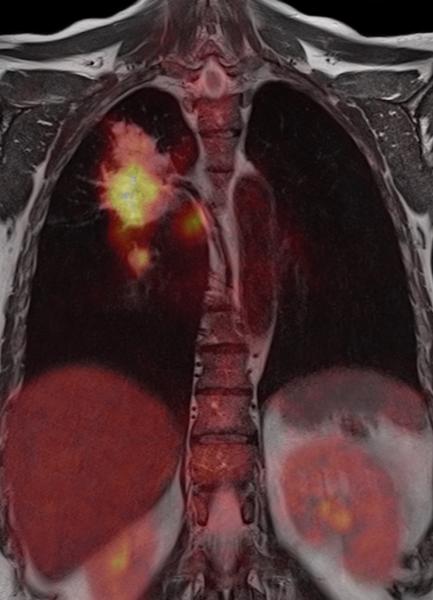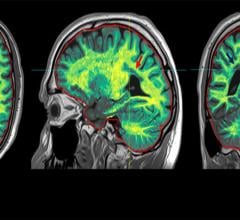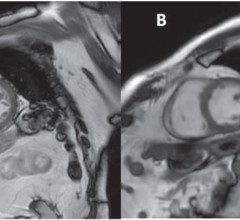
Greg Freiherr has reported on developments in radiology since 1983. He runs the consulting service, The Freiherr Group.
Woe is PET/MR

PET/MR: better together or apart? Image courtesy of Siemens, provided by University of Geneva
What a difference a few decades makes. In the early-1980s radiologists couldn’t wait to get their hands on an MR scanner. Never mind the clinical value was anything but certain. The most anybody could say is that MR absolutely, positively diagnosed multiple sclerosis. Reimbursement, shmeimbursement. Lay down a couple or three million dollars. Knock down a wall. Bring that monster in. We’ll just hope it pans out.
Not so today. PET/MR has been on the market since late-2011, FDA cleared and CE marked. At the European Congress of Radiology (ECR) March 7, Prof. Heinz-Peter Schlemmer, M.D., head of the radiology department and coordinator of the imaging and radio-oncology research program at the German Cancer Research Centre in Heidelberg, Germany, asked whether PET/MR was “a marriage made in heaven or hell?” It was a rhetorical question.
Schlemmer threw advocates a bone, explaining their initial euphoria as “understandable,” then slamming them upside the head, saying PET/MR “cannot enter routine clinical practice before diagnostic accuracy, influence on therapeutic management and economic factors have been carefully considered and evidenced by clinical studies.”
Never mind that his argument doesn’t make much sense…he may be right. In today’s global economy, novel technologies are a hard sell.
By Schlemmer’s account, PET/MR is a day late and a dollar short. Coming more than a decade after PET/CT, it would appear to have missed the boat, albeit not for lack of trying. The unique challenge of cohabitating a PET ring and superconducting magnets was why the first PET/MR images took until 2006 to make. This excludes the images fused from separately performed scans, of course. And therein may be the saving grace of PET/MR.
A good case can be made for the purchase of a hybrid. It merges data from simultaneously performed MR and PET scans, yet has the potential to conduct MR separately. Vendors leveraged the two faces of PET/CT in the early days, when demand for hybrid scans was only beginning. PET/MR can deliver about the same diagnostic information as its CT counterpart. Some believe it can do even more.
Consider oncology. MR is the go-to modality when assessing cancer. Oncology applications account for 90 percent of PET/CT. And the coming wave of biomarkers, led by Eli Lilly’s Amyvid for visualizing amyloid plaques suggestive of Alzheimer’s Disease, will be focusing more and more PET attention on the brain, another strength of MR.
Schlemmer admitted as much in his cautionary tale at the ECR. MR provides superior anatomical resolution to CT, he noted, with PET providing metabolic and membrane receptor information. “Together (PET/MR) increases your sensitivity and specificity for tumor detection and characterization,” he said.
Yet Schlemmer felt compelled to warn against putting too much stock in the hybrid’s chances, saying it remains to be seen if the simultaneous acquisition of MR and PET will deliver better accuracy than “subsequent sequencing.” I have to ask…why should we care?
Schlemmer’s argument can be turned on its head. Why not gather those data simultaneously rather than separately? Sure, you have to buy the hybrid, but you can run it in MR mode, if demand for PET/MR is not available. Reimbursement shouldn’t be an issue. MR and PET are each reimbursable.
Most astonishing is that pessimism about PET/MR should come from Europe. If there is one place on earth that should be throwing its radiological arms around PET/MR, it is Europe. Concerns about X-ray dose in the United States were first voiced on the other side of the Atlantic. MR is free from ionizing radiation.
You’d think support for PET/MR would be bubbling over there.


 April 24, 2024
April 24, 2024 








